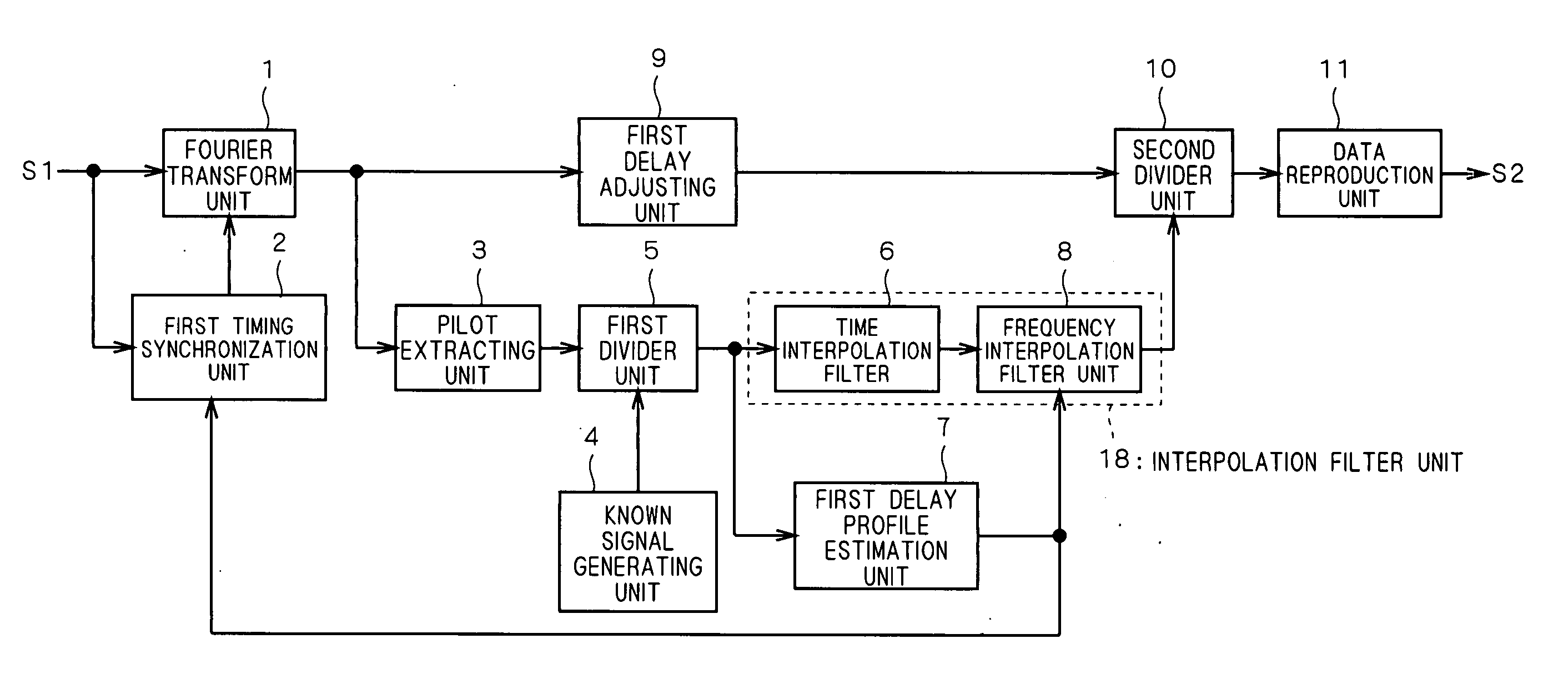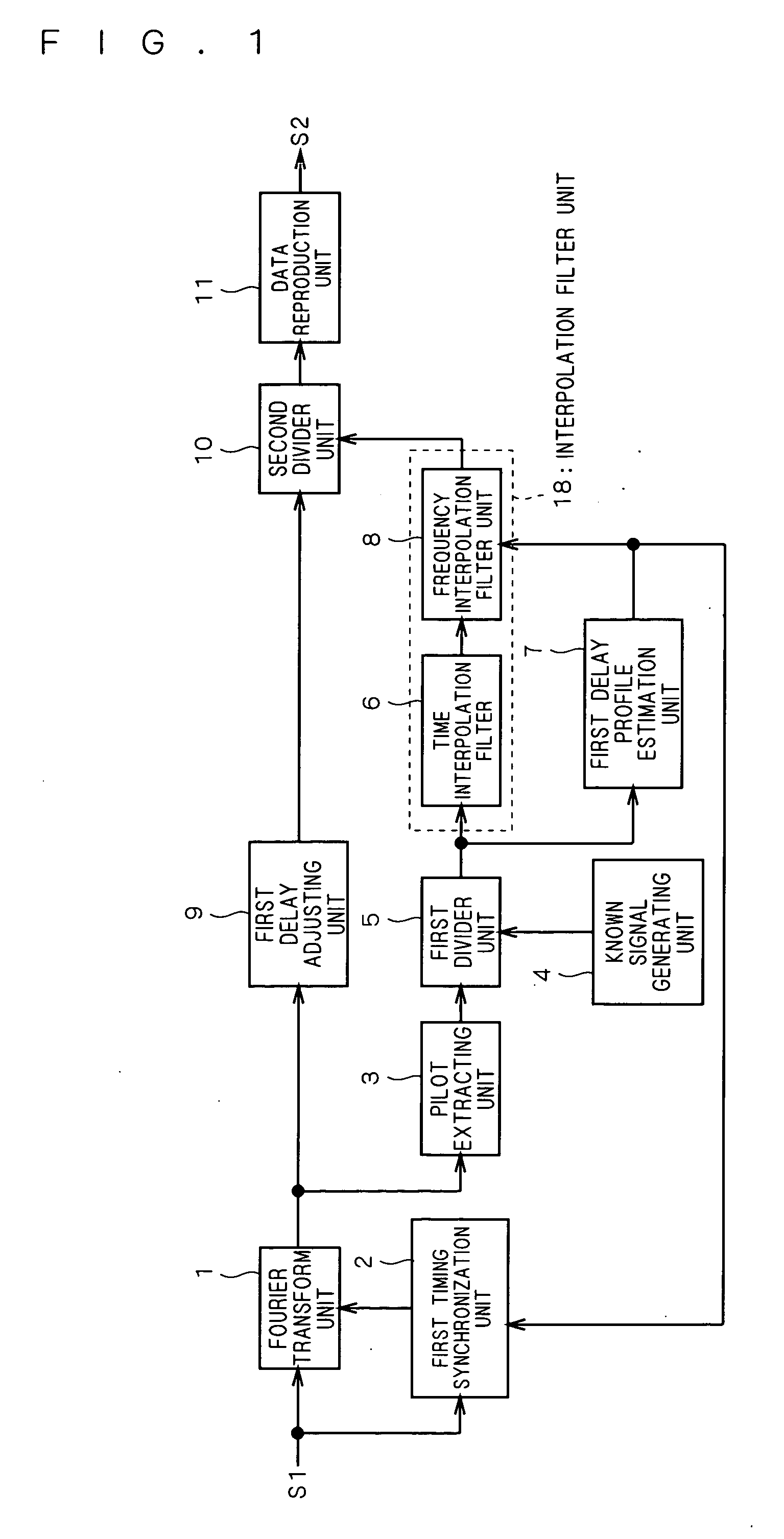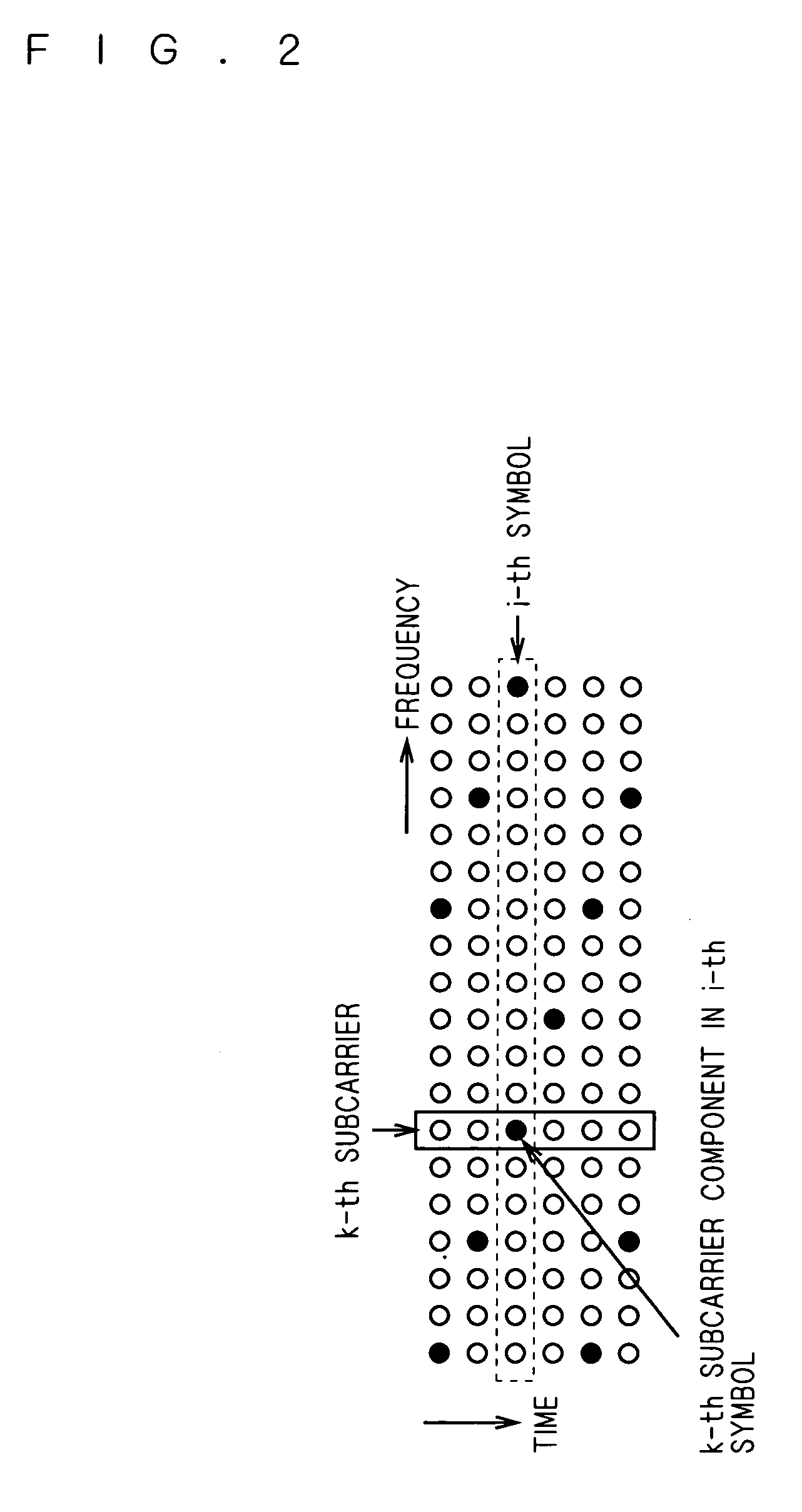Demodulation device and demodulation method
a demodulation device and orthogonal frequency division technology, applied in the direction of orthogonal multiplex, synchronisation signal speed/phase control, baseband system details, etc., can solve the problem of increasing noise that is other than desired signals, unable to achieve sufficient noise suppression effect, and unable to reduce the error rate obtained. the effect of demodulation and suppression of unnecessary noise components
- Summary
- Abstract
- Description
- Claims
- Application Information
AI Technical Summary
Benefits of technology
Problems solved by technology
Method used
Image
Examples
first preferred embodiment
[0029]FIG. 1 is a block diagram showing a configuration example of a demodulation device according to the present preferred embodiment. In FIG. 1, a Fourier transform unit 1 performs a Fourier transform on a signal obtained by frequency-converting a received OFDM signal into a predetermined signal band (the signal is hereinafter also referred to as “S1”) based on a timing signal that is input from a later-described first timing synchronization unit 2, and outputs a subcarrier component contained in S1 to a pilot extracting unit 3 and a first delay adjusting unit 9. The pilot extracting unit 3 extracts a received pilot signal contained in the subcarrier component.
[0030] Since a transmission pilot signal that has been inserted in an OFDM signal with a transmission device is preset in the demodulation device as a known signal, the demodulation device can compute a transmission channel characteristic corresponding to the received pilot signal by comparing the received pilot signal with...
second preferred embodiment
[0057] The demodulation device according to the first preferred embodiment is configured to estimate delay profiles from transmission channel characteristics corresponding to pilot signals that are output from the first divider unit 5; in contrast, the present preferred embodiment is configured to estimate delay profiles based on transmission channel characteristics obtained by interpolating the transmission channel characteristics corresponding to the foregoing pilot signals along the time axis.
[0058]FIG. 7 is a block diagram illustrating the configuration of a demodulation device according to the present preferred embodiment. In FIG. 7, a Fourier transform unit 1, a first timing synchronization unit 2, a pilot extracting unit 3, a known signal generating unit 4, a first divider unit 5, a time interpolation filter unit 6, a frequency interpolation filter unit 8, a first delay adjusting unit 9, a second divider unit 10, and a data reproduction unit 11 have the same configurations a...
third preferred embodiment
[0068] The demodulation devices of the foregoing first and second preferred embodiments are configured to control the frequency axis interpolation filter while adjusting the synchronization timing for performing a Fourier transform. In the present preferred embodiment, a demodulation device is configured to give a phase rotation to a subcarrier component that is output from the Fourier transform unit 1, corresponding to the frequency of the subcarrier component, and also to control the frequency axis interpolation filter.
[0069]FIG. 8 is a block diagram illustrating the configuration of a demodulation device according to the present preferred embodiment. In FIG. 8, a Fourier transform unit 1, a pilot extracting unit 3, a known signal generating unit 4, a first divider unit 5, a time interpolation filter unit 6, a first delay profile estimation unit 7, a frequency interpolation filter unit 8, a second divider unit 10, and a data reproduction unit 11 have the same configurations as th...
PUM
 Login to View More
Login to View More Abstract
Description
Claims
Application Information
 Login to View More
Login to View More - R&D
- Intellectual Property
- Life Sciences
- Materials
- Tech Scout
- Unparalleled Data Quality
- Higher Quality Content
- 60% Fewer Hallucinations
Browse by: Latest US Patents, China's latest patents, Technical Efficacy Thesaurus, Application Domain, Technology Topic, Popular Technical Reports.
© 2025 PatSnap. All rights reserved.Legal|Privacy policy|Modern Slavery Act Transparency Statement|Sitemap|About US| Contact US: help@patsnap.com



